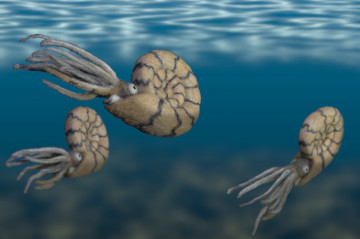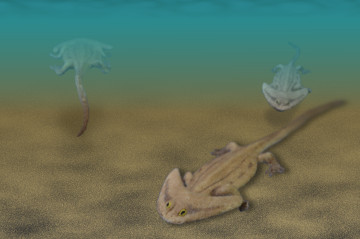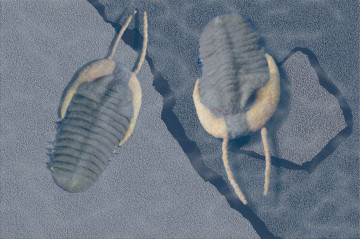- Cambrian
- Ordovician
- Silurian
- Devonian
- Carboniferous
- Permian
Permian Period
From 298.9 million years to 251.9 million years ago.
The Permian was derived from the name of region (city) in the Ural Mountains, Russia.
The Permian is the last period of the Paleozoic era. Euramerica and Gondwana collided and were united to the supercontinent Pangaea. Because of its huge size, the climate showed considerable change. The north region was not only hot, but also had seasonal fluctuations between rainy and dry season. The south region became cooler and drier, progressing the glacification in various areas. The inlands were progressing drier.
Gymnosperms such as ginkgos and conifers, which produce seeds, developed and adapted to dry environment. They replaced the woody ferns of swamp forests as dominant groups of the forests. Feeding hehaviors of animals also were changing, then herbivores groups emerged and evolved.
Therapsids, one of synapsids groups and described as mammal-like reptiles, acquired the ability to keeps the body temperature constantly, namely, endothermy, and developed hairs too. They adapted to the environments with large daily difference in temperature, and invaded to inner region of Pangaea, became the dominant groups in the Late Permian.
Surrounding Pagaea, the extentive ocean, Panthalassa, was sprended and coasts provided the developed coral reefs where fishes, chephalopods and so on flourished.
Ray-finned fishes (Actinopterygian) which are the major group in the modern fishes were leading role in the Permian sea. Nautiloids and ammonoids also developed.
At the end of the Permian, the largest mass extinction happened. Especially the marine invertebrates suffered enomous damages and most of them disappeared.
References:
- National Geographics
- Pappas S (2013) Paleozoic Era: Facts & Information Live Sience June 20, 2013
- Smithsonian Environmental Research Center Forces of Change - Atmosphere -
- UCMP - University of California Museum of Paleontolgy - (Legacy Exhibits Online, Tour of Geologic TIme)
- International Commission on Stratigraphy - International Chronostratigraphic Chart v 2023/06.



